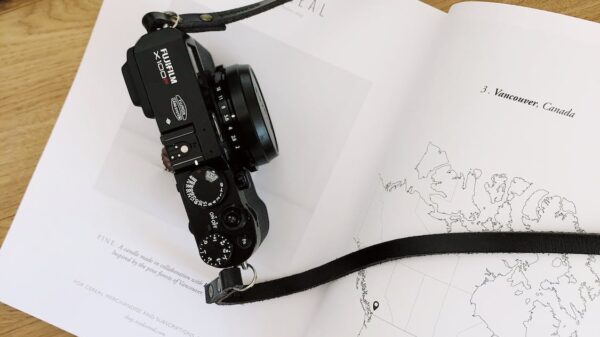Color is not just a visual element in art, it’s a language that speaks to us on an emotional level. It creates moods and feelings, evokes memories and associations, and can even influence our behavior. That’s why understanding color theory is crucial for any artist who wants to convey their message effectively. In this blog post, we’ll explore the importance of color theory in art and how it can elevate your work from amateurish to professional grade. Get ready to discover the secrets behind the power of colors!
Introduction to Color Theory
Color theory is one of the most important aspects of art. It is the study of how colors interact with each other and how they can be used to create certain effects. Color theory can be used to help choose colors for your paintings or other artwork.
There are three primary colors: red, yellow, and blue. These are the colors that cannot be made by mixing any other colors together. All other colors are created by mixing these primary colors together in different proportions.
The secondary colors are orange, green, and purple. They are made by mixing two primary colors together. For example, orange is made by mixing red and yellow together, green is made by mixing blue and yellow together, and purple is made by mixing red and blue together.
There are also tertiary colors, which are made by mixiing a primary color with a secondary color. For example, red-orange is made by mixing red and orange together, blue-green is made by mixing blue and green together, and so on.
Color theory can help you understand which colors go well together and which ones don’t. It can also help you create certain effects with your colors. For example, if you want to make a painting look warm and inviting, you might use mostly warm colors like reds, oranges, and yellows. If you want to make a painting look cold or sinister, you might use mostly cool colors like blues and greens.
Color theory is a complex
Primary Colors and the Color Wheel
Color theory is a fundamental part of art. It helps artists select the right colors to create their desired effect.
Primary colors are the basis of all other colors. They cannot be created by mixing other colors together. The three primary colors are red, yellow, and blue.
Secondary colors are created by mixing two primary colors together. The three secondary colors are orange, green, and purple.
A color wheel is a tool that artists use to help them understand how colors work together. The color wheel is divided into three main sections: primary colors, secondary colors, and tertiary colors.
Primary Colors
Red, yellow, and blue are the primary colors. Primary colors cannot be created by mixing other colors together. They are the basis for all other color relationships.
Secondary Colors
Orange, green, and purple are the secondary colors. Secondary colors are created by mixing two primary
How Colors Influence Emotion and Mood
Color theory is a critical part of understanding how colors influence emotion and mood. Colors can be used to create specific effects in an artwork, and can also be used to evoke specific emotions in the viewer.
Different colors can create different effects, depending on their hue, saturation, and brightness. For example, warm colors like red and orange are often associated with energy and excitement, while cool colors like blue and green are often associated with relaxation and calm. Bright colors are often associated with happiness and positive emotions, while dark colors are often associated with sadness and negative emotions.
Using color theory in art can help the artist create a desired effect in their work, or evoke a certain emotion in the viewer. It is important to understand the different properties of color, and how they can be used to create different effects.
Theory of Tints and Shades
In art, a tint is the addition of white to a color to lighten it. A shade is the addition of black to a color to darken it. Tints and shades are created by adding either white or black pigment to a color. The more white that is added, the lighter the tint will be. The more black that is added, the darker the shade will be.
Color theory is the study of how colors interact with each other. It includes the study of color harmony, which is how colors can be combined to create pleasing results. Color theory also includes the study of value, which is how lightness and darkness are used in art. Value is important in creating tints and shades because it determines how light or dark a color will appear.
The theory of tints and shades helps artists to understand how colors can be used to create different effects. By understanding tints and shades, artists can create paintings that are more harmonious and have greater visual interest.
Color Combinations
Color theory is a vital part of creating any work of art. It is the study of how colors interact with each other and how they can be used to create desired effects. A knowledge of color theory can help an artist to choose the right colors for their artwork and create harmonious color combinations.
There are three primary colors: red, yellow, and blue. These colors cannot be made by mixing any other colors together. All other colors are created by mixing these primary colors together in different proportions. The secondary colors are orange, green, and purple. They are made by mixing two primary colors together. For example, orange is made by mixing red and yellow together.
There are also tertiary colors, which are made by mixing a primary color with a secondary color. For example, red-orange is made by mixing red and orange together. There are six tertiary colors: red-orange, yellow-orange, yellow-green, blue-green, blue-purple, and red-purple.
Color theory can help artists to create pleasing color combinations in their artworks. For example, the combination of a warm color like orange with a cool color like blue can create a dynamic and exciting effect. Similarly, combining different shades of the same color can create depth and interest in a painting or drawing.
Artists need to be aware of the emotional effects that colors can have on viewers when choosing colors for their artwork. For instance, warm colors like
Analogous Colors and Complementary Colors
Analogous colors are those that are next to each other on the color wheel. For example, red, orange, and yellow are analogous colors. Complementary colors are those that are across from each other on the color wheel. For example, red and green are complementary colors.
Color theory is important in art because it helps artists create harmonious color schemes. Analogous colors can be used to create a monochromatic scheme, which is when one color is dominant with accents of the other two. Complementary colors can be used to create an energetic scheme, which is when all three colors are used equally.
Intensity, Value, and Saturation
When it comes to color, there are three main characteristics: intensity, value, and saturation. The intensity of a color is how bright or dull it appears. Value refers to how light or dark a color appears. And saturation is how vibrant or muted a color appears.
Each of these characteristics can have a big impact on the overall look and feel of a piece of art. For example, intense colors can make a painting feel more energetic, while softer, more muted colors can create a calm and relaxing atmosphere.
Value also plays an important role in creating contrast and visual interest within a painting. For instance, using light and dark colors side-by-side can help add depth and dimension to a flat image.
Saturation is another tool that artists can use to create different effects in their work. Vibrant, saturated colors can make a painting feel alive and exciting, while desaturated colors can give it a more subdued and calming feeling.
By understanding the basics of color theory, artists can experiment with different combinations of intensity, value, and saturation to create unique effects in their work. So next time you’re creating a piece of art, think about how you want your colors to make viewers feel, and let that guide your choices.
Using Color in Art Creation
Color theory is a vital part of art creation, as color can drastically affect the look and feel of a piece. By understanding the basics of color theory, artists can more effectively use color to create their desired results.
The first step in using color effectively is to understand the three properties of color: hue, value, and chroma. Hue refers to the dominant wavelength of light that makes up a particular color. Value is how light or dark a color appears, and chroma is the intensity or saturation of a color.
With these three properties in mind, artists can begin to experiment with different color combinations to create various effects. For example, using colors with high chroma next to each other will create a vibrant, attention-grabbing effect, while lower chroma colors will blend more easily and create a softer look.
Value also plays an important role in art creation. Darker colors tend to recede into the background while lighter colors come forward, so artists can use this knowledge to create depth and dimension in their work. One common technique is called chiaroscuro, which uses sharp contrasts of light and dark values to give an image an ethereal quality.
Color theory may seem like a daunting topic at first, but by taking some time to understand the basics, artists can open up a whole new world of possibilities in their work. With a little experimentation, anyone can start using color like a master!
Conclusion
Color theory is a crucial element in art that can be used to create beautiful works of art. It can help establish an atmosphere, evoke emotion, and bring life to any piece of artwork. Knowing the basics of color theory is important for anyone interested in creating with color, from visual artists to interior designers. With knowledge on how colors interact and affect each other, one can become more confident when it comes to making decisions about color combinations. Keep exploring the vast world of colors and possibilities; you never know what creative ideas may arise!










